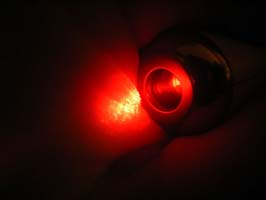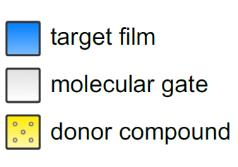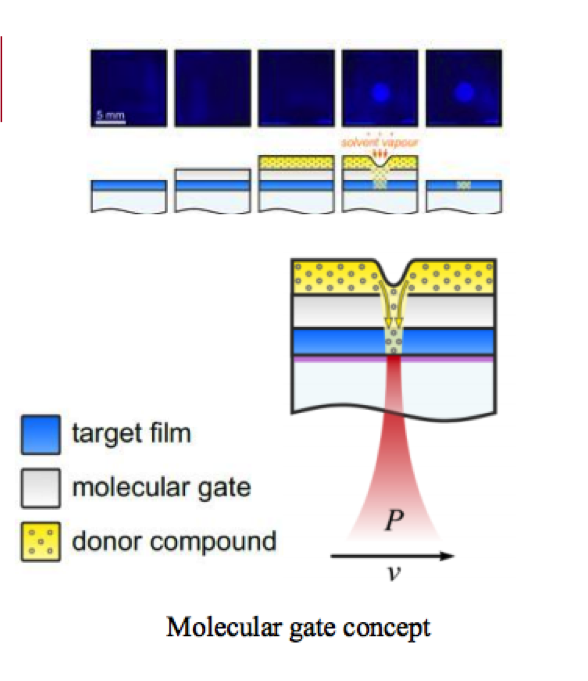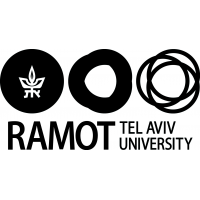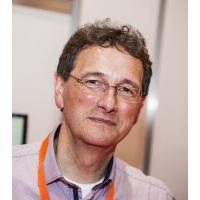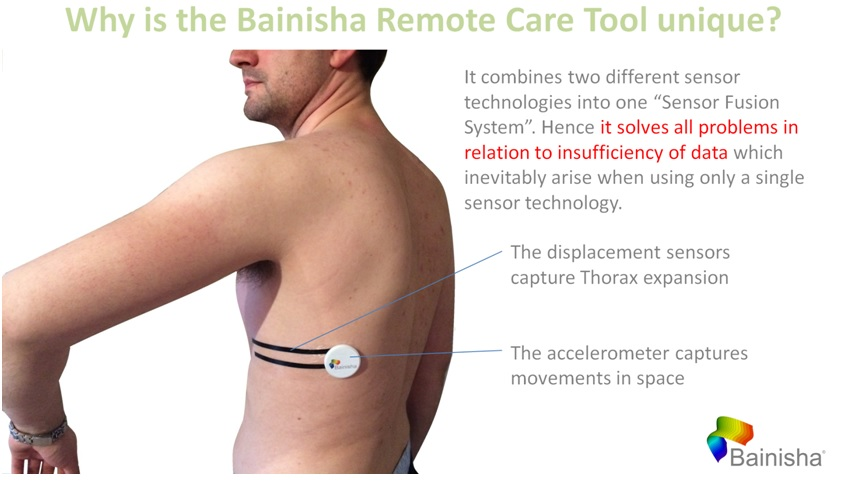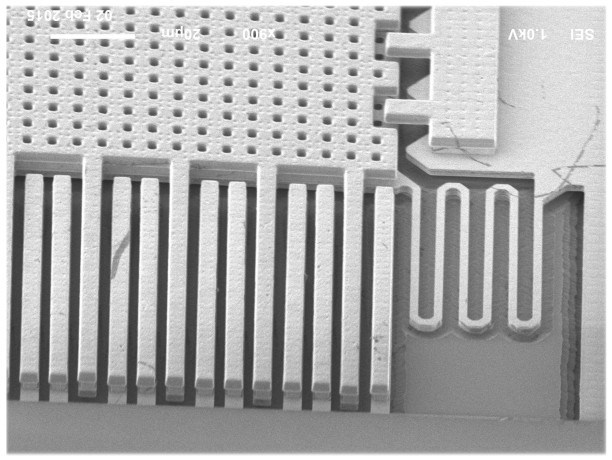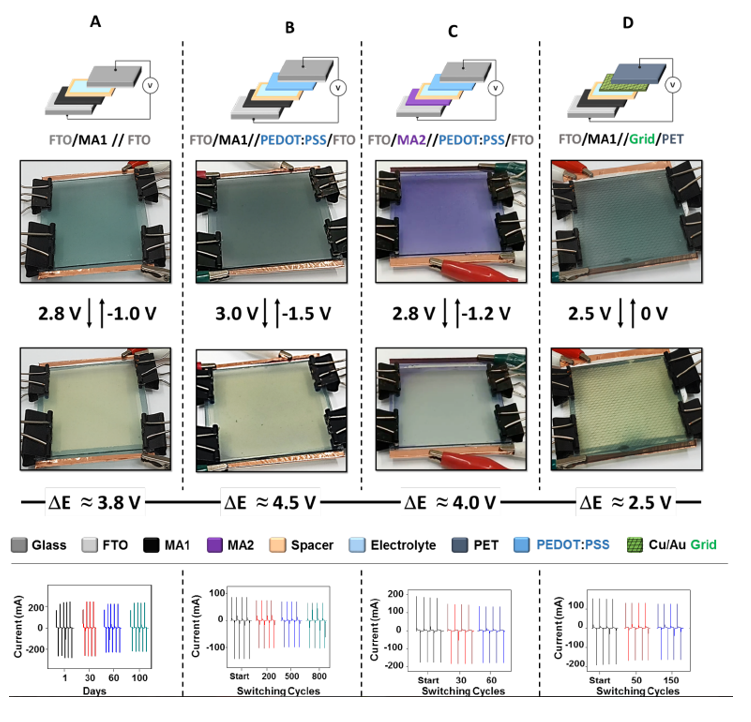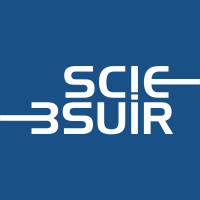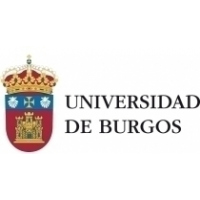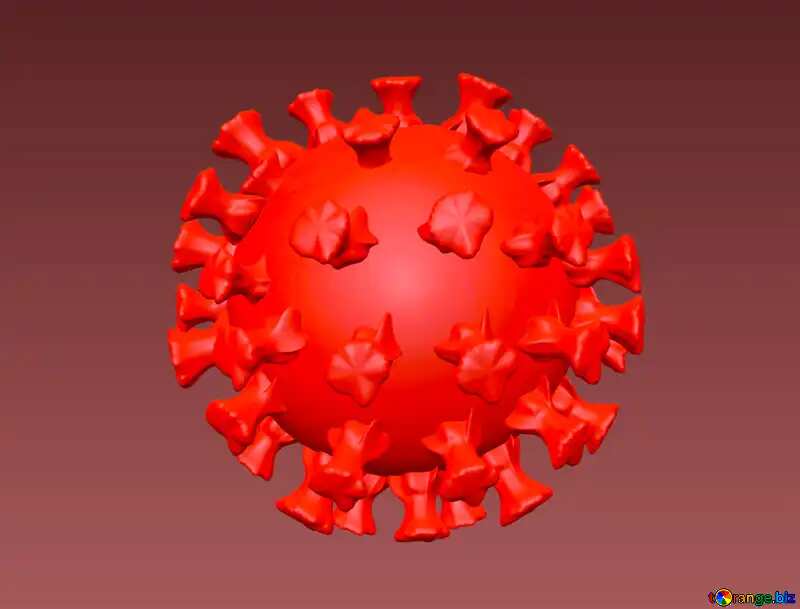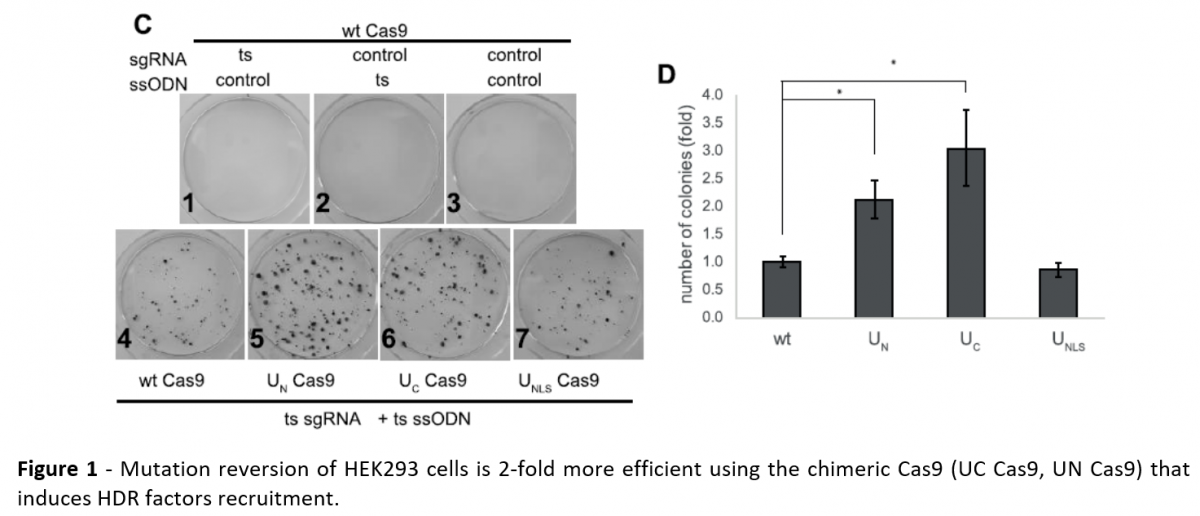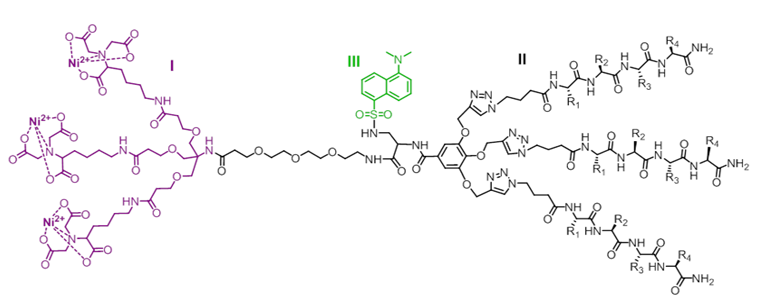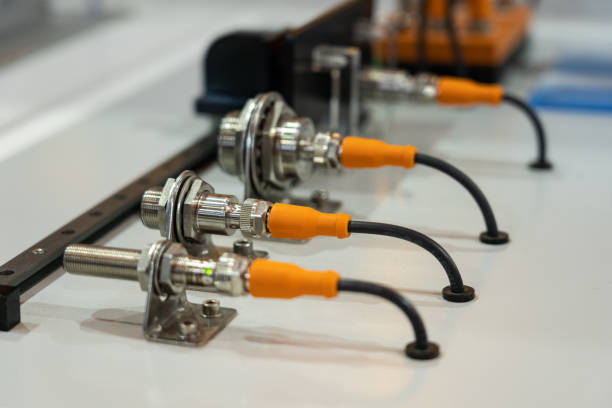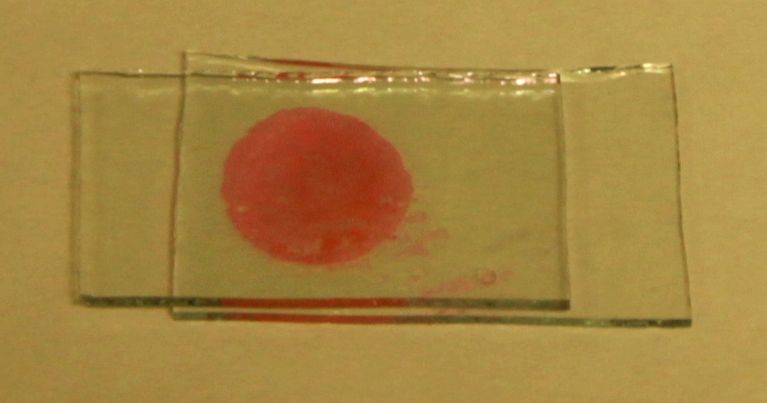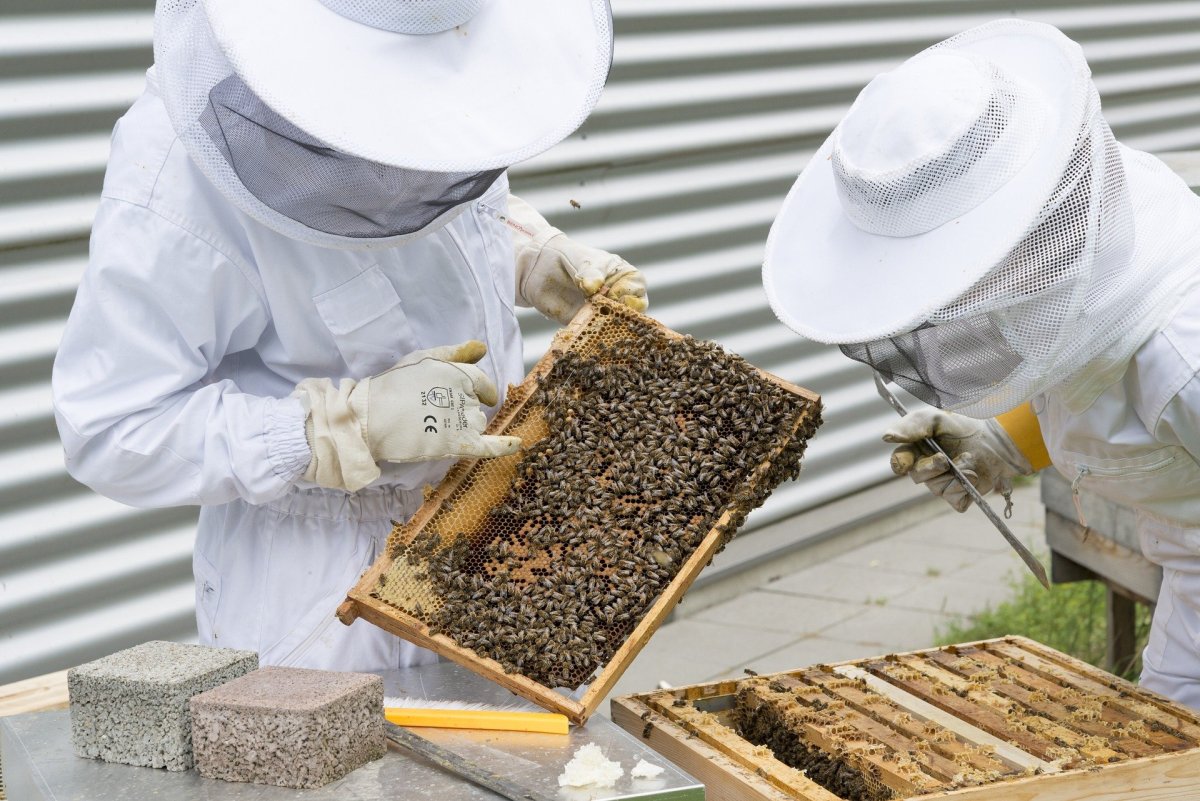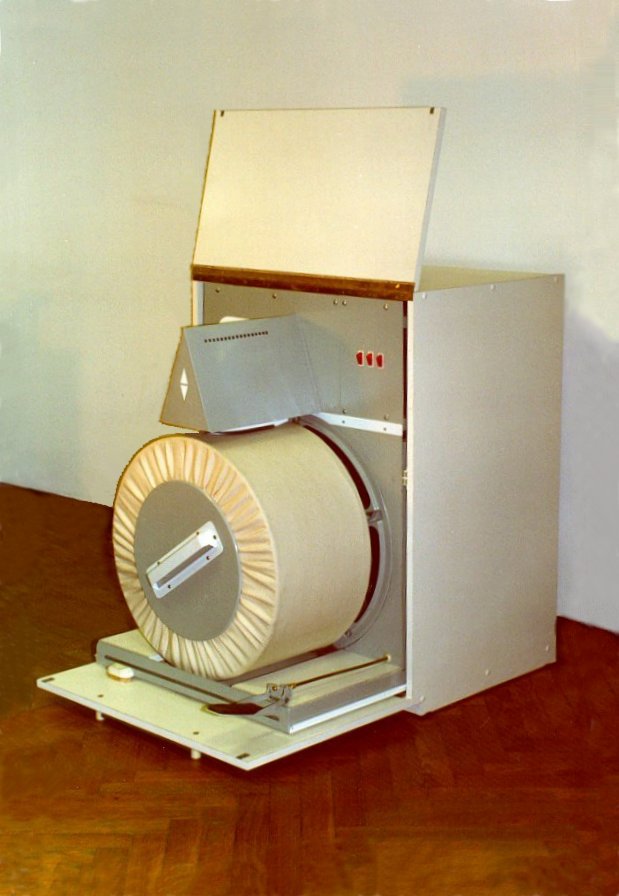Technology Offers Site map description
H
Universitat Politècnica de Catalunya - UPC posted this:
High resolution non-contact measurement of biophysical parametersA prototype of a novel laser-based displacement sensor enabling subnanometric resolution measurements of biophysical parameters has been developed. The system is in addition extremely compact (few cm3), robust and non-contact. Partners to further develop the current prototype, to pursue novel applications, and/or to establish commercial agreements along with technical cooperation are sought.CSIC - Consejo Superior de Investigaciones Científicas posted this:
High resolution paterning in organic semiconductorsCSIC has developed a new a method for high resolution structural and/or compositional modification in a molecular organic semiconductor film. This method has applications in the production of electronic, optoelectronic and photonic devices, among others. Industrial partners are being sought to collaborate through a patent license agreement. An offer for Patent LicensingAlfonso del Rey Pérez posted this:
High resolution patterning in organic semiconductorsIcmab researchers have developed a new method for high resolution structural and/or compositional modification in a molecular organic semiconductor film. This method has applications in the production electronic, optoelectronic and photonic devices, among others.
Technology Transfer Officer at ICMAB-CSICRAMOT at Tel Aviv University Ltd. posted this:
High Voltage Photovoltaic Cells with High EfficiencyA novel photovoltaic cell is described for converting sunlight to electricity at higher efficiency relative to existing cells, and with improved flexibility for integration in modules, both one-sun and concentrating. The new cell contains many small sub-cells, which are internally connected in series. Such configurations are called Monolithic Integrated Modules (MIM) and they are capable of providing very high open circuit voltage. Our MIM design is based on a monolithic device with vertical PN junctions with significant expected advantages in performance relative to existing MIM designs: higher voltage; smaller contact area and no front metallization grid, leading to higher efficiency; better utilization of the solar spectrum; and better matching to integration in modules including concentrator modules. High-voltage cells can be electrically connected in parallel instead of series, leading to nearly independent operation (voltage-coupled instead of current-coupled) even under non-uniform illumination and even partial shading conditions. This will improve the overall performance of a photovoltaic system, and permit a less demanding and less expensive optical design. Project ID : 6-2011-180FUNDITEC posted this:
High-added value products from Agro-Food residuesTechnology for development of valuable products for the food and packaging industry that applies to hygienic design of facilities and food safety and Circular Economy (Life cicle, Eco design, Reuse of food by-products including water) Looking for Research co-operation and Commercial agreement with technical assistancePatrick Van De Vyver posted this:
High-definition respiratory monitoring tool - Bainisha's Twin Chest SystemCurrent technology Current systems for measuring/monitoring respiratory movements (such as Thorax displacement) @ medical level, rely on one single technology: Inertial Measurement Units (IMU) aka "accelerometry". The resulting data of such measurements however are very often inadequate & hard or impossible to interpret. Problem E.g. the raw IMU-data output of coughing may look exactly the same as the raw IMU-data of riding a bike on really bumpy road ! When such type of confusion arises, it is impossible to distinguish between very different events. Solution A second sensor technology is added: a very thin, ultra-stretchable, very accurate displacement sensor. This sensor is fixed to the body as a simple self-adhesive patch. The fixation is of such a high quality and "integrates" with the skin so thoroughly, that it is nick-named a "Second Skin"-sensor. Together with the on-board IMU the "Second Skin" sensor forms a Sensor Fusion System. I.e. by cross-linking the raw data of two very different sensor concepts all uncertainties, "grey"-zones and impossible to interpret situations are eliminated. The sensor-fusion concept also widens and multiplies the capabilities for capturing a multitude of different types of "body language/events"
CEO Bainisha at BainishaUniversitat Politècnica de Catalunya - UPC posted this:
High-performance CMOS-MEMS manufacturing technologyA new technology for low-cost and high-performance MEMS sensor design using a standard CMOS process has been patented. This allows for virtually any microprocessor and integrated circuit to become aware of its physical operating environment thanks to the multiple sensory information that it provides at minimum additional cost. Partners to further develop the system and/or to establish commercial agreements along with technical cooperation are sought.Yeda posted this:
High-Performance Electrochromic DevicesHigh-performance electrochromic materials that exhibit a practical combination of low-voltage operation and efficient color-switching, as well as long-term stability have been developed by the group of Prof. van der Boom. Electrochromic materials that are currently available in the market offer a broad range of colors and a fair electrochromic activity. For the incorporation of such materials into a wide range of real-world applications, there is a need for more intense coloration, shorter switching times and improved stability.BSUIR R&D Department posted this:
High-precision radio altimeters of low heights in the millimeter wavelength range for use in vehiclesUniversity has developed a range of radio altimeters of low heights in the millimeter wavelength range. Delivery of the finished product. Product development for specific customer requirements.UNIVERSIDAD DE BURGOS posted this:
High-strength self-compacting siderurgic concreteSelf-compacting concrete with electric arc furnace slag in all fractions that is composed of Portland cement as primary binder, ground granualted blast furnace slag as secondary binder and ladle furnace slag as ternary binder, in addition to aggregate, water and admixtures, metallic and/or synthetic fibers. Due to its innovative composition and installation procedure, it achieves excellent results of durability, sustainability and aesthetics.BSUIR R&D Department posted this:
High-temperature cavitometer (up to 1000° C.)Designed for recording changes and monitoring the activity of cavitation in liquids and metal melts at temperatures up to 1000° C. Cavitation meter is equipped with a USB output and a memory card and comes with a data processing software.Sayali Warad posted this:
High-temperature multivariable microwave sensors for Oil-Sand applicationsSensor for multivariable analysis of oil sands at high-temperature and high-pressure environmental conditions. The sensor is fabricated and tested in the microwave and millimeter-wave research lab.
IP Market Analyst at University of Alberta, Technology Transfer Services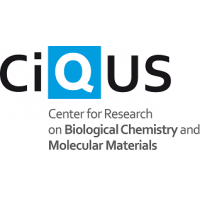 Universidade de Santiago de CompostelaUniversidade de Santiago de CompostelaUniversidade de Santiago de Compostela
Universidade de Santiago de CompostelaUniversidade de Santiago de CompostelaUniversidade de Santiago de CompostelaTechnology Transfer Office
Universidade de Santiago de Compostela posted this:
HIGH-THROUGHPUT CALORIMETRY. Thermal Microsensor with Improved Temporal and Spatial ResolutionThe prototype developed within ERC-PoC "ANTS" project, has demonstrated its sensitivity for a new concept of microcalorimeters, as well as providing advantages in microfluidics. We aim to: a) Integrate this technology within microfluidic devices or applications where size and fast response time are crucial. b) Develop a High-Throughput Calorimetry going beyond the current capabilities on ITC. > Sensing element. Ferromagnetic permalloy line 4x28 µm x 20 nm thick: affordable, miniaturization… Sensor was fabricated in a single deposition. > Temporal response. Milliseconds, to stimulus >10 microwatts; further improvements are in progress. > Easy adoption. Compatible with standard configuration of microcalorimeters. > IPR: EP, US, CN, KR, JPCovid-19 Innovation Challenges by Innoget posted this:
High-Throughput Sequencing Methods to Test SamplesHighly parallel test for the presence of SARS-CoV-2 The currently used test for SARS-CoV2 virus uses molecular methods for detecting the presence of viral RNA sequences in subject samples. This is the approved gold standard in the field. The current application of this test requires several cumbersome steps that are labor intensive and require non-trivial reagents (which are becoming a global bottleneck). It is clear that during the next stage of managing the COVID19 pandemic, large scale testing will be needed. Project ID : 47-2020-10893University of Alberta, Technology Transfer Services posted this:
High-Yield, Highly Reactive Polyols for Polyurethane ProductionNew method to create higher polyols yields that eliminates toxic solvent use, reduces operational costs, and process integration. Enables improved physical properties (e.g., increased functionality, higher reactivity, low viscosity)Yeda posted this:
Higher Efficiency of CRISPR Gene Editing Using Chimeric Cas9CRISPR-Cas9 is a powerful tool for genome editing, widely used for basic research and the development of treatments for genetic diseases. However, its efficiency is currently limited. The current technology is a new chimeric Cas9 fused to a domain that recruits DNA repair factors directly to the genomic site that is being edited, thus doubling the efficiency of ‘error-free’ genome editing. This novel and highly efficient chimeric version of the Cas9 endonuclease is thus particularly relevant for clinical gene therapy applications.Yeda posted this:
Highly Selective Fluorescent Biosensor for Labeling His-Tagged ProteinsA rapid, label-free biosensor for detecting specific conformation of His-tag labeled proteins, accessible for use in both academic- and commercial-R&D was invented at the Weizmann Institute of Science. This fluorescent biosensor detects and labels His-tagged proteins in complex environments, such as living cells, while offering high sensitivity, speed, and cost-effectiveness. Fluorescent biosensing has become a valuable tool in analytical research, while at the same time the poly-histidine tag (His-tag) has become the most commonly used tag for protein labeling. However, commercial products for labeling and detecting conformational changes in His-labeled proteins suffer from three main limitations: First is their inability to identify specific changes in the protein conformation. Second, even if such changes are detected, labeling of His-tag proteins is usually very laborious. Third, commercial probes tend to be large and consequently can interfere with the proteins function. Therefore, there is a need for a small, direct, and non-interfering fluorescent probe for detection of conformational changes. Prof. Margulies and his team have developed a first of its kind fluorescent molecule that provides detection of changes to the surface of His-labeled proteins. Subsequently, labeling proteins only if they are in a specific conformation. The biosensor exhibits high affinity, excellent signal-to-noise ratio and can be easily applied with no fixation or tedious protocols. Using the technology, many proteins and specific conformations can now be labeled and studied for the first time (proteins that were already successfully labeled using the biosensor: Calmodulin, B-cell lymphoma 2, G-protein).Yeda posted this:
Highly Sensitive Nanoscale Scanning Magnetic and Thermal SensorA new technology developed by a group of researchers from the Weizmann Institute is a nanoscale sensor-on-tip for local magnetic signals and thermal dissipation with state-of-the-art sensitivity and spatial resolution. Detecting a signal as low as the magnetic moment of a single electron is of key technological importance for applications ranging from electronics (e.g., hard discs, magnetic RAM and spin valves) to biotechnology applications, including enhanced tissue and organ imaging and MRI. Furthermore, investigation of energy dissipation on the nanoscale is of major interest in quantum systems in which the dissipation mechanism is related to preservation of quantum information, which is of particular importance in the field of quantum computing. To date, there are several local magnetic imaging methods, such as scanning superconducting quantum interference devices (SQUID), magnetic force microscopy and Lorentz microscopy. Scanning SQUID microscopy is a promising technology, having the highest field sensitivity (1 micro-Gauss), however, it has a rather poor spatial resolution (of several microns). Energy dissipation is another important imaging parameter, which is not readily measurable on the nanometer scale and existing thermal imaging methods are not sensitive enough for studying quantum systems and are unsuitable for low temperature operation. Here, we propose a novel sensor device comprising a nanoscale SQUID-based probe. The fabrication method, enables the miniaturization of the sensor to an effective diameter of 1 ?B/Hz1/2) and micro-Kelvin thermal resolution, whereas commercially available thermal scanning systems are limited to an order of 10 milli-Kelvin.SUSANA CÁMARA DECIMAVILLA posted this:
Highly useful lactate carrier molecules in cancer treatmentA group of researchers from the University of Burgos, in collaboration with the University of Barcelona and IDIBELL, has patented a family of molecules that have the ability to transport lactate in living cells. The ability of these molecules to alter the lactate concentration in cells can have a significant impact on cancer therapy, as it has been observed that high levels of lactate in the tumor microenvironment are associated with progression and treatment resistance in some cancer cases. This technology represents a new advancement in the search for therapeutic strategies against cancer.
CEO at UNIVERSIDAD DE BURGOSTaras Maiula posted this:
Histone Deacetylases (HDAC) Targeted Libraries. Screening compounds for epigenetic drug discovery.The design of selective #HDACs inhibitors requires more exploration due to the multifunctional mechanistic nature of cancer and still remains a great challenge. Dedicating to this promising class of epigenetic anti-cancer drug targets, HDACs Targeted Library (https://bit.ly/3xdJLWw) were kindly prepared by Otava scientists.
Head of the QC department at Otava Research InstituteUniversidad de Alicante posted this:
Holographic sensor for detection of adulterants in essential oilsThe research group of Holography and Optical Processing of the University of Alicante has developed a holographic technique for the detection of adulterants in essential oils. This technique is able to detect different types of adulterants qualitatively. In addition, a quantitative measurement of the degree of adulteration of an essential oil can also be performed by means of pre-calibration of the sensor for a particular adulterant. The sensor could be miniaturized and manufactured at a low cost compared to traditional methods of analysis such as gas chromatography and high performance liquid chromatography. The sensor can be used by unqualified personnel.Universidad de Alicante posted this:
Home automation and smart environmentsThe Group has been working in the development of technologies that integrate the management of the entire set of electronic devices existing in a home. The group is specialized in providing home automation solutions to people with mobility problems, such as elderly people, children or disabled people. It also is experienced in the development of computer systems for energy management of housing. Innovative aspects The research group has significant experience in developing automated systems for all types of environments. The possibility to develop specific integration solutions for any type of device used in a home (lighting, security system, wireless appliances and entertainment equipment, sensor network environment, etc.). They can also integrate all kinds of control systems and power generation to facilitate saving and energy efficiency of buildings. The group is able to develop new solutions based on the requirements and user needs. Main advantages of the technology The technology developed by the research group is established in the project metalTIC - Digital Home. This project, conducted for the Federation of Employers of the Metal of the Province of Alicante (FEMPA), has been the design and development of a set that simulates a house with the latest innovations in TICC to provide services at home. The 50 square meters house has a living room with kitchen, bedroom and bathroom, showing key concepts such as energy control, monitoring and security, comfort and leisure, communications, accessibility and management.Universitat Politècnica de Catalunya - UPC posted this:
Homodyne receiver with post-processing for optical communicationsIn high bit rate optical transmission, the use of a coherent homodyne receiver will largely increase the communication capacity and enhance the transmission performances. The proposed receiver is potentially large scale integrable, thus being useful for access network transceivers, and other applications which require low-cost and high performance receivers.Yeda posted this:
Homogeneous Dispersion of CNT Composites for Improved Conductivity, Bucky PapersBattery and capacitor electrode technologies available in the industry today, are struggling to keep up with rapidly advancing applications that require high power and energy density such as electric vehicles, solar cells and telecommunications systems. One of the leading solutions to this problem are CNT-based films, exhibiting excellent conductivity with potentially moderate costs, yet current methods for their formation are both complicated and expensive or hamper the qualities of the material, causing conductivity reduction. A new technology developed by a group of researchers from the Weizmann Institute of Science is simple and potentially cost-effective, preserves the high electrical qualities of the original CNTs and can be easily used to form large surfaces. This technology involves a simple assembly method of organic nanocrystal combined with carbon nanotubes (ONC)/(CNT) to form self-supporting hybrid films with conductivities as high as 5.78 S/m, and excellent thermal stability (of up to ~300 °C). The characteristics of the films enable their use as porous electrodes, with easily adjustable pore sizes. These films can then be straightforwardly incorporated into existing platforms such as solar cells, batteries and super capacitors, improving their energy and power density capabilities. Successful incorporation of electrodes into perovskite solar cells has already been demonstrated to improve its efficiency and photo-stability and promising preliminary results were recently demonstrated for the utilization of ONC porous electrodes as separators in supercapacitors.UNIVERSIDAD DE BURGOS posted this:
Honey powder preparation methodResearchers from the University of Burgos have developed a procedure to produce powdered honey by lyophilization or by vacuum drying using maltodextrin as a dehydration aid, so that a fine and pleasant powdery solid is obtained. This maintains the sensory and physicochemical properties of honey as much as possible.Unitat de Valorització de la URV posted this:
HORECA: Platform for selection of employees for the service sectorPlatform with instruments for the recording of absentee behavior in employees of the hotel sector. It is an important tool for proper management of the PRL.
Licensing Manager at Fundació URVJagiellonian University posted this:
Hospital emissions: N2O abatementThe subject of the offer is catalyst, α-Al2O3 supported, dedicated to reduce the emission of N2O in a low temperature range. Application: Hospital gases collectors, nitric acid production plant emitters, adipic acic production plant emitters.Dianna Gellar posted this:
How to Distinguish Bacteria and Fungi: From Morphology to SequencingWhen classifying bacteria and fungi, morphological features are v¬ery relevant. Colony morphology is a useful tool widely used to classify and define them by researchers. Carefully studied and used during these experiments are the colony properties of individual bacterial and fungal colonies. Compared to fungi, bacteria easily thrive on nutrient-rich culture media. Phenotypically distinct-looking colonies are formed by various species of bacteria and fungi. The size, shape, texture, color, margins of the colonies vary.
Marketing Manager at CD Genomics

